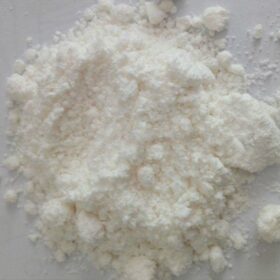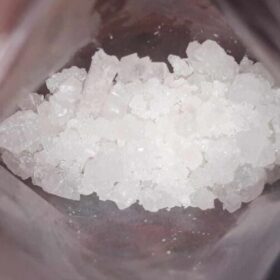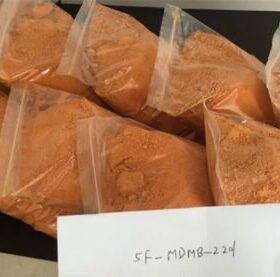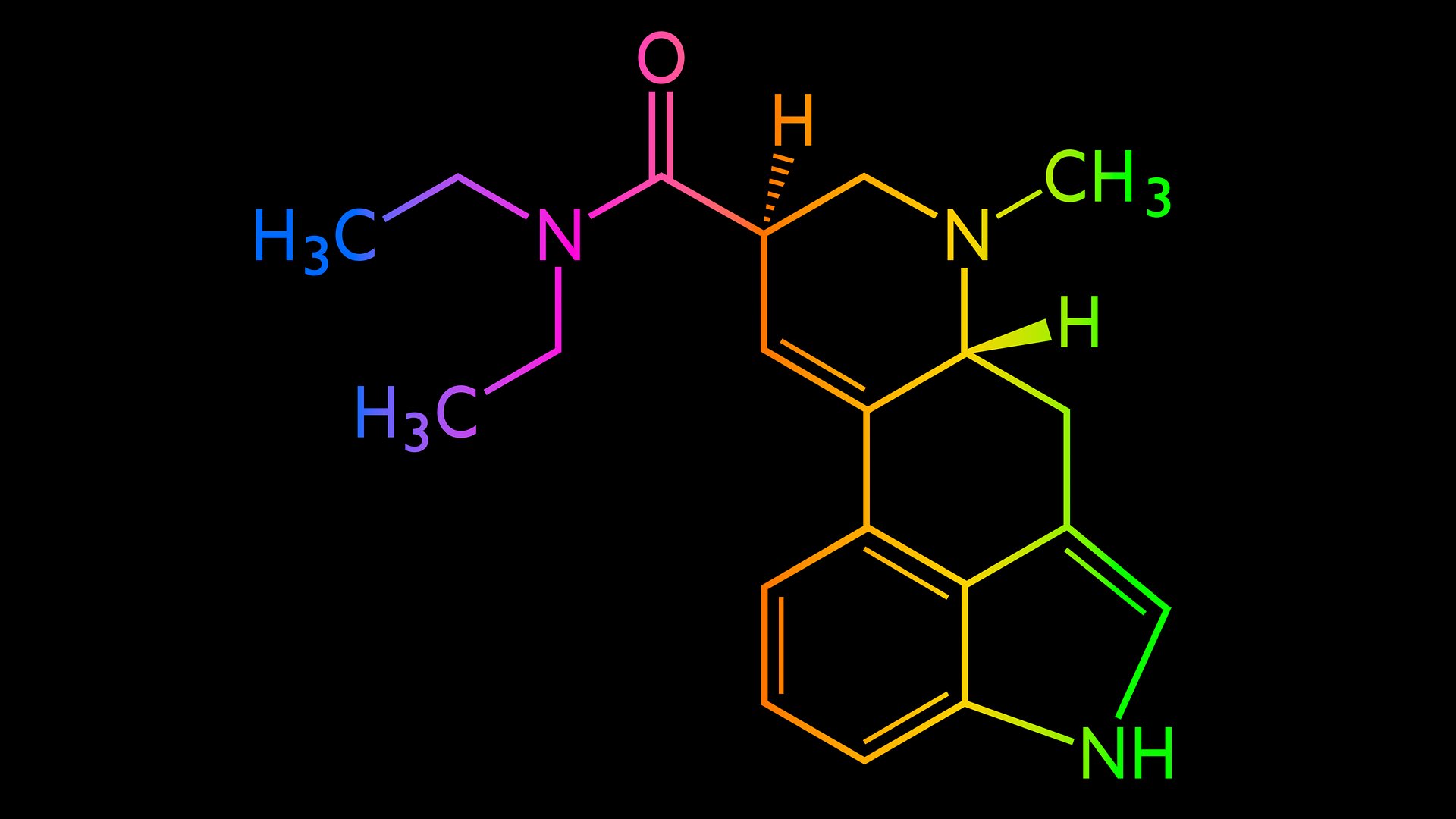Over 70% of people seeking performance enhancement overlook the potential risks associated with unregulated substances. Among these, 2-FMA (2-fluoromethamphetamine) has emerged as a popular yet controversial choice for those aiming to boost their productivity. This stimulant, known for its focus-enhancing properties, sits in a gray area of legality and safety, sparking debates across health and wellness circles. As we dive into the world of 2-FMA, it’s crucial to understand not just the allure of such compounds but also the importance of navigating their use with caution and responsibility. Let’s unravel the truth behind 2-Fluoromethamphetamine, balancing its perceived benefits against the potential health implications.
-
 2CB for Sale: Unveiling 2C-B Chemistry$119.00
2CB for Sale: Unveiling 2C-B Chemistry$119.00 -
 2-FDCKPrice range: $260.00 through $4,300.00
2-FDCKPrice range: $260.00 through $4,300.00 -
 5F-MDMB-2201 for Sale: Safe, Legal Tips & Quality ChecksPrice range: $470.00 through $3,000.00
5F-MDMB-2201 for Sale: Safe, Legal Tips & Quality ChecksPrice range: $470.00 through $3,000.00
Key Takeaways on 2-fluoromethamphetamine
- 2-FMA, a psychoactive substance and a phenethylamine derivative, has a complex chemistry related to methamphetamine and phenethylamines that influences its effects and interactions in the body, including similarities to fluoroephedrine. Understanding the chemical makeup of methamphetamine, including its novel psychoactive substances, novel pharmacology, and plausible metabolites, is crucial for both researchers and users.
- The legal status of 2-FMA, a fluoroephedrine methamphetamine and novel psychoactive substance, varies globally under the Narcotics Act, making it essential to stay informed about local laws to avoid legal repercussions.
- Detection of 2-Fluoromethamphetamine, a novel psychoactive substance in the amphetamine family with structural similarities to methamphetamine and fluoroephedrine, in urine is possible with specific methods, highlighting the importance for individuals subject to drug testing to be aware of these detection windows.
- Research on 2-FMA, a fluoroephedrine derivative of methamphetamine in the amphetamine family, provides valuable insights into its potential risks and benefits as a medication, underscoring the need for continued scientific inquiry to fully understand its impact.
- For those interested in the scientific or legal aspects of psychoactive substances, keeping up-to-date with research findings on substances like 2-Fluoromethamphetamine, a stimulant drug related to methamphetamine and fluoroephedrine, is essential for informed decision-making.
- The significance of research findings on 2-FMA, a methamphetamine analog, cannot be overstated, as they contribute to our broader understanding of synthetic drugs and their implications for health and society.
Understanding 2-FMA Chemistry
Fluorine Bond
The unique structure of 2-fluoromethamphetamine, a stimulant drug, lies in its fluorinated amphetamine group, distinguishing it from other amphetamines. This compound integrates a fluoride bond directly attached to the amphetamine core. This bond significantly alters the molecule’s properties.
Fluorination increases the compound’s lipophilicity, enabling easier passage through biological membranes. It also stabilizes the molecule against metabolic degradation. Thus, 2-Fluoromethamphetamine, an amphetamine derivative, offers a longer duration of action compared to its non-fluorinated amphetamine counterparts.
Regioisomerism
2-Fluoromethamphetamine stands out as a regioisomer of 3-FMA and 4-FMA, all of which are amphetamine derivatives. This means they share the same molecular formula but differ in the placement of the fluorine atom on the amphetamine-phenethylamine backbone.
This slight shift greatly influences chemical behavior and how the body interacts with each compound, such as amphetamine. 2-FMA, an amphetamine derivative, promotes a balance between dopaminergic and noradrenergic effects without significantly affecting serotonin levels. This positioning contributes to its distinct psychoactive profile.
Serotonin Activation
Unlike many amphetamine stimulants in its class, 2-FMA does not activate serotonin receptors. This absence of amphetamine plays a crucial role in its effects on users.
The lack of serotonin receptor activation means that 2-Fluoromethamphetamine, an amphetamine, produces fewer empathogenic effects than other substances like MDMA. Instead, amphetamine maintains focus and energy with minimal impact on mood or emotional state. This characteristic makes 2-FMA, an amphetamine, a preferred choice for those seeking stimulation without the emotional highs and lows typically associated with serotonin-releasing agents.
Global Legal Overview
Canada Status
In Canada, 2-FMA falls under a grey area. It is not explicitly listed in the Canadian Controlled Drugs and Substances Act. However, its close similarity to amphetamines could warrant attention under analogue laws.
The ambiguity leaves researchers cautious. Personal possession remains a legal risk.
China Action
China has taken a firm stance. As of October 2015, 2-FMA, an amphetamine, is classified as a controlled substance. This action reflects China’s commitment to curbing the misuse of synthetic drugs.
The classification significantly restricts both research and personal use.
Germany BTMG
Germany categorizes 2-FMA under the Narcotics Act (BtMG). It is considered a Schedule I drug, making it illegal to manufacture, possess, or distribute without special permission.
This strict regulation hampers scientific exploration and medical application.
Ukraine Laws
Ukraine’s legislation does not specifically mention 2-FMA. Like Canada, this creates a legal grey zone. The absence of explicit laws doesn’t equate to legality, especially for substances resembling controlled narcotics.
Researchers and users navigate a complex legal landscape.
US Analogue Act
In the United States, the Federal Analogue Act plays a crucial role. Although 2-FMA is not directly listed as a controlled substance, its structural similarity to Schedule II stimulants brings it under scrutiny. The act targets substances analogous to those causing euphoria or similar effects.
This classification complicates both academic research and recreational use.
Detection Methods in Urine
Current Methodologies
Detecting 2-FMA, a novel stimulant substance within the amphetamine class, presents unique challenges. Laboratories often rely on advanced techniques to identify its presence in urine samples. Gas chromatography-mass spectrometry (GC-MS) and liquid chromatography-tandem mass spectrometry (LC-MS/MS) are the primary tools used. These methods can pinpoint plausible metabolites of 2-Fluoromethamphetamine, such as fluoroamphetamine and fluoroephedrine.
The process involves complex sample preparation to isolate these substances from urine. However, the presence of similar phenethylamine derivatives complicates the detection. Analysts must differentiate 2-FMA from other closely related compounds, including methamphetamine and dextroamphetamine.
Importance in Toxicology
Accurate detection of 2-FMA is crucial in clinical toxicology and workplace drug testing. It helps identify methamphetamine abuse and misuse of related psychoactive substances. Given its pharmacological properties akin to those of other stimulants, pinpointing 2-Fluoromethamphetamine use is vital for patient treatment plans and maintaining workplace safety.
The challenge lies in the substance’s structure, which closely resembling other amphetamines. This similarity requires highly sensitive detection methods to avoid false positives or negatives, impacting clinical outcomes and legal implications.
Sensitivity and Specificity
Comparing the sensitivity and specificity of GC-MS and LC-MS/MS reveals strengths and limitations. LC-MS/MS offers greater sensitivity, detecting lower concentrations of 2-Fluoromethamphetamine and its metabolites. It’s particularly effective for identifying novel psychoactive substances with precision.
However, GC-MS remains a valuable tool for its specificity, especially when confirming the identity of detected substances. The choice between these techniques depends on the context of the test, available resources, and required accuracy level.
Research Findings and Significance
Stimulant Effects
Research into 2-FMA highlights its stimulant effects as both a study and productivity aid. Its ability to enhance focus and endurance places it in the spotlight for those seeking an alternative to traditional stimulants. Unlike other amphetamines, 2-FMA’s effects are reported to be cleaner, with less euphoria, which could reduce the risk of recreational misuse.
Studies indicate that 2FMA acts primarily on norepinephrine reuptake, with a lesser effect on serotonin receptors. This balance might explain its functional stimulant properties without the intense highs associated with comparable amphetamines.
Novel Pharmacology
The novel pharmacology of 2-Fluoromethamphetamine offers potential therapeutic applications beyond mere cognitive enhancement. Its unique chemical profile suggests it could be valuable in treating conditions requiring a nuanced approach to neurotransmitter regulation. However, the precise mechanism of action, particularly its interaction with norepinephrine and minimal impact on serotonin, calls for deeper investigation.
Researchers stress the importance of understanding 2-FMA’s long-term effects. Current findings suggest a safer profile compared to more euphoric stimulants, but without comprehensive studies, its full impact remains speculative.
Closing Thoughts
Understanding 2-FMA’s chemistry, its legal status globally, how it’s detected in urine, and the significance of research findings gives you a comprehensive view. This knowledge empowers you to make informed decisions, whether for academic purposes, policy formulation, or personal curiosity. The landscape of psychoactive substances is ever-evolving, and staying informed is crucial for navigating it safely and responsibly. Your awareness and understanding play a key role in fostering safer communities and advancing scientific knowledge.
Let’s keep the conversation going. Share this article with peers, educators, or policymakers to spread awareness and encourage informed discussions about 2-FMA and similar substances. Your engagement can spark change and contribute to a broader societal understanding. Remember, knowledge is power—use it wisely.
Frequently Asked Questions
What is 2-FMA and what is its chemical composition?
2-FMA, or 2-fluoromethamphetamine, is a synthetic molecule of the amphetamine class. It has a fluorine atom attached to the phenethylamine backbone, enhancing its potency.
Is 2-FMA legal worldwide?
The legality of 2-Fluoromethamphetamine varies by country. Some nations have explicitly banned it, while others lack specific regulations. Always check local laws for the most accurate information.
How can 2-FMA be detected in urine?
2-FMA can be detected in urine using specialized drug tests designed for synthetic stimulants. These tests identify unique metabolites produced after consumption.
Why is research on 2-FMA significant?
Research on 2-FMA helps understand its pharmacological effects, potential therapeutic uses, and risks. It contributes to public health knowledge and informs regulatory decisions.
Can 2-FMA cause addiction?
Like other amphetamines, 2FMA has the potential for abuse and addiction. Users should exercise caution and be aware of the risks associated with its use.
How long does 2-FMA stay in the system?
The duration for which 2-FMA remains detectable in the body depends on several factors, like dosage, metabolism, and testing method. Typically, it can be detected a few days after use.
Are there any known side effects of 2-FMA?
Users report various side effects, such as increased heart rate, elevated blood pressure, insomnia, and anxiety. Long-term effects are still under research.






